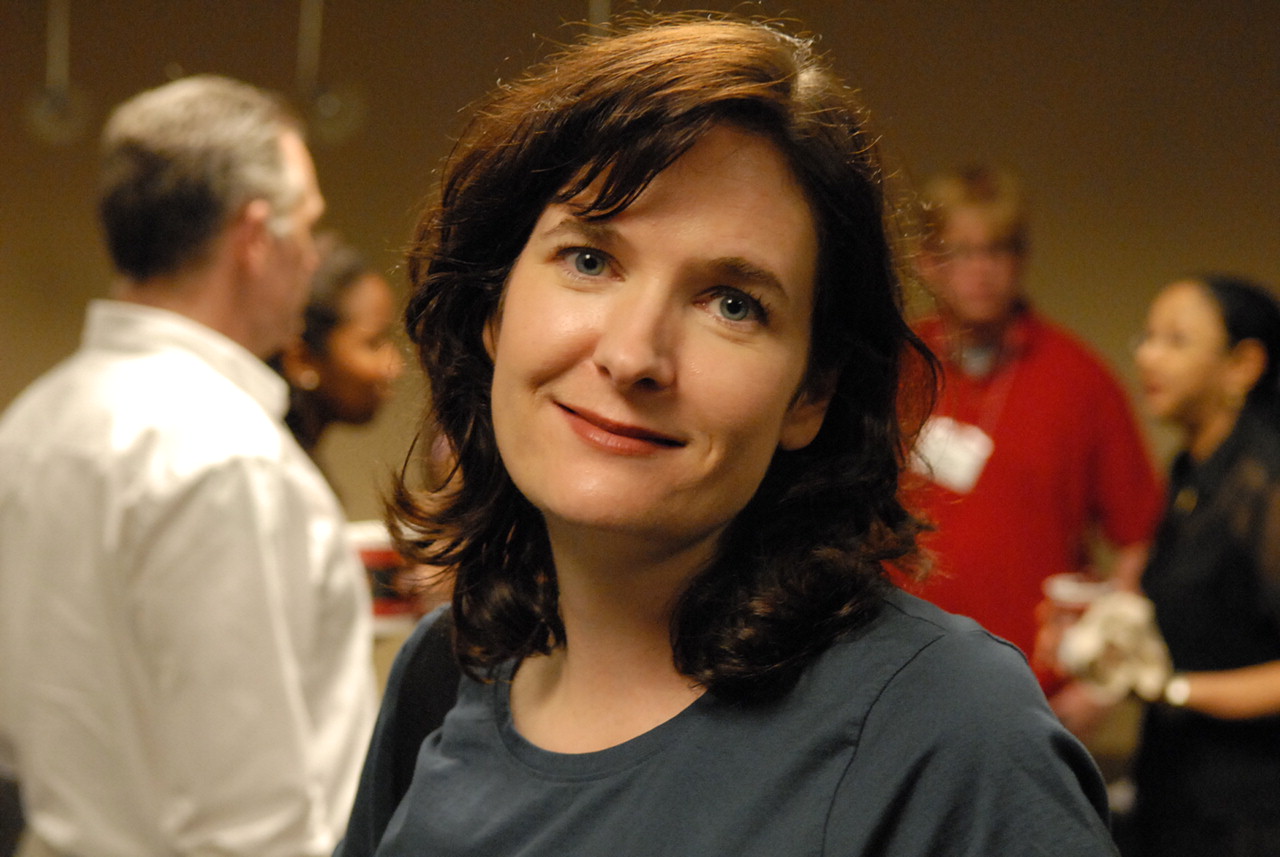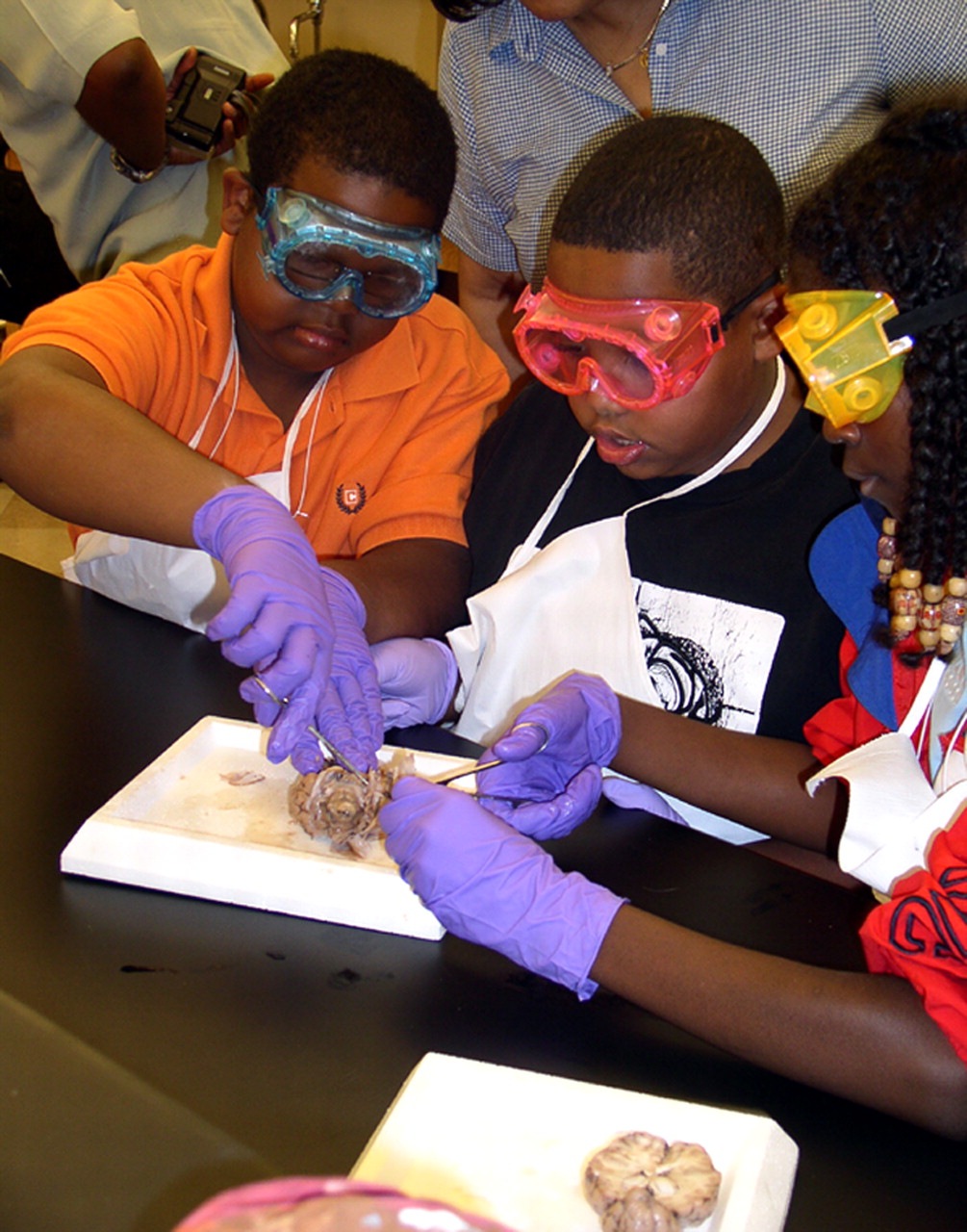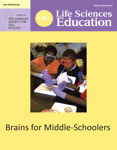Laura Carruth
Abstract
Note from the Editor
Educator Highlights for CBE—LSE show how professors at different kinds of institutions educate students in life sciences with inspiration and panache. If you have a particularly creative teaching portfolio yourself, or if you wish to nominate an inspiring colleague to be profiled, please e-mail Laura Hoopes at lhoopes@pomona.
Laura Carruth, Assistant Professor, Center for Behavioral Neuroscience, Georgia State University, Atlanta, GA
Laura Hoopes: What has been your most interesting teaching experience?
Laura Carruth: Well, I get to teach undergraduate students, but I also get to teach K–12 teachers. I can't say one group is more interesting than the other, though.
LH: You are in neuroscience at Georgia State University, and you teach classes and also direct undergraduate research, correct?
LC: Yes, that's right. Since 2002, I've been appointed as a “Science Educator.” My position is designed to bridge the biological sciences and education. So I also offer workshops and advice for K–12 teachers and work with younger students.
LH: Is it hard to balance all of those responsibilities?
LC: I guess it is, but I enjoy it all, so I can't complain! I wouldn't want to give up any part of my job.
LH: Tell me more about your work with teachers.
LC: I run a week-long professional development workshop for K–12 teachers called “Why They Do What They Do at the Zoo: Animal Behavior and the Brain.” Also, I facilitate a summer neuroscience-themed camp for middle school-aged children. Both are sponsored by the Center for Behavioral Neuroscience. These projects have also received support from the Dana Alliance for Brain Initiatives.
LH: Do the teachers in your “Animal Behavior and the Brain” workshop get academic credit for participating?
LC: Yes, they get five Professional Learning Units for teacher continuing education credit.
LH: I'm amazed that you can teach neurosciences to middle school children. Can you give us an example of what kinds of activities you do with them?
LC: The kids are incredibly engaged and motivated. We do a lot of hands-on activities and lab activities. For example, before we start exploring the sense of touch, we might ask them to touch their finger, arm, and foot and ask them why it feels different each time. We describe a few experiments they could try, and then just let them decide what they find interesting and fun.
LH: What might they do?
LC: After they describe the differences in touch using two-point discrimination, we introduce the concept of receptors in the skin, and let them figure out if they can feel the “differences” when they touch points close together or far apart, and whether that differs for different parts of the body.
LH: What else?
LC: We explore all of the senses, work with smell memory, get them to test their own vision. They enjoy these activities while they are learning. They also dissect sheep brains, and cow, pig, and sheep eyes.
Middle school children dissecting brains.
LH: Tell me more about the teacher training.
LC: The workshop is offered in partnership with Zoo Atlanta. We cover neuroanatomy, hormones, and behavior. The teachers explore the zoo, interact with the zoo staff, and follow up during the school year with lesson plans they develop using the information they learned during the workshop. We collect data to assess both teacher and student content knowledge and attitudes toward science before and after the workshop. The data on the teachers is collected during the workshop, and then the teachers assess their students so that we can find out what the teachers have learned and how successful their lesson plans are.
LH: Does each teacher use a particular zoo animal?
LC: They are not required to, but many do; it depends on the classes they teach and the grade levels of their students. A lot of the teachers bring their classes to the zoo on field trips and focus on animal behavior while they are there. Some focus on bird or insect observations at their schools as well.
LH: Have there been any surprises for you in doing this project with teachers?
LC: Several teachers of special needs students have told me that taking care of animals in their classrooms helped their students to understand behavior better and learn more about themselves. They found that taking care of the animals was a very rewarding experience for them. I wasn't expecting that, but it's another benefit of the program.
LH: Have any of the teachers you've worked with done particularly creative lessons based on the workshops?
LC: All of the lessons have been thoughtful and engaging. One teacher used video footage of a concrete enclosure with tigers pacing back and forth, and then footage of a more recently designed enclosure for tigers with trees, grass, and more space. The students compared the behaviors and saw that the tigers in the more natural surroundings engaged in stalking, grooming, sleeping, and playing. It was clearly better for the tigers than the concrete enclosure, where the animals exhibited pacing behavior. This led the students to survey what the big-cat houses were like at several other zoos in the country.
LH: Do you get into evolution of behavior?
LC: Yes, we developed an activity with K–12 teachers and their students called “Build-a-Brain” that lets us teach about the development and evolution of the vertebrate brain using vertebrate brain models and Play-Doh. We discuss the development of important regions, like the cerebrum, as we move between organisms. We discuss how behavior can relate to these changes in brain regions. If the animal is a climber, the teachers see a big cerebellum; if it isn't a mammal and hunts in the day, they see a big optic tectum. More convolutions seem to imply a more complex adaptive response to the environment. We discuss these differences a great deal in the workshop as the teachers discover differences. They then use the Play-Doh to build the brain of an imaginary vertebrate after first describing its behavior, movement, etc.
LH: How about hormonal control of behavior?
LC: I am a neuroendocrinologist, and study avian brain development and sexual differentiation of the song system. I am interested in how hormones act on the brain during development to influence how the song system forms, and how hormones influence singing in adulthood. Songbirds are excellent for studying sex differences because so many species show sexually dimorphic song production.
LH: What courses do you teach to undergraduates?
LC: Animal Biology for juniors and seniors and Hormones and Behavior for juniors, seniors, and graduate students.
LH: What are your favorite kinds of activities for undergraduates?
LC: I like “Think-Pair-Share” questions and Minute papers. In my Animal Biology class, I might ask, “Can you stop evolution?” Lots of the undergraduates have misconceptions about evolution; some might think that organisms are no longer evolving. Discussions of this sort can help students dive deeper into the topic, which in Georgia, where I live, can be controversial. Or I might show a video of the behavior of herring gulls and lesser black-backed gulls and ask the students for their interpretation of what happened. The gulls try to set up territories. Through discussion with each other, the students learn to understand what they see the birds doing.
LH: Thanks for sharing your thoughts about science education with CBE-LSE, Laura.



